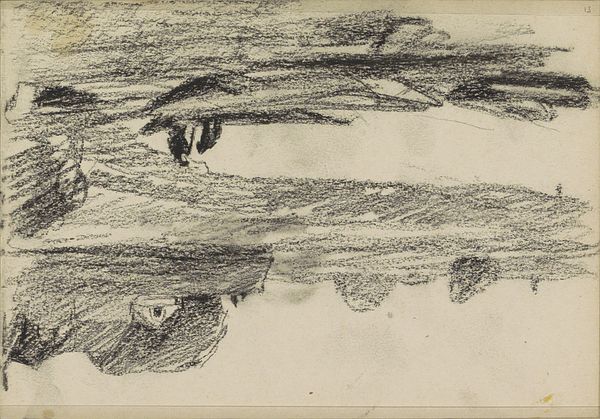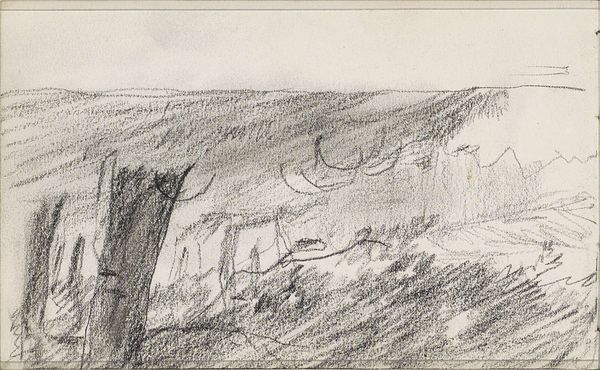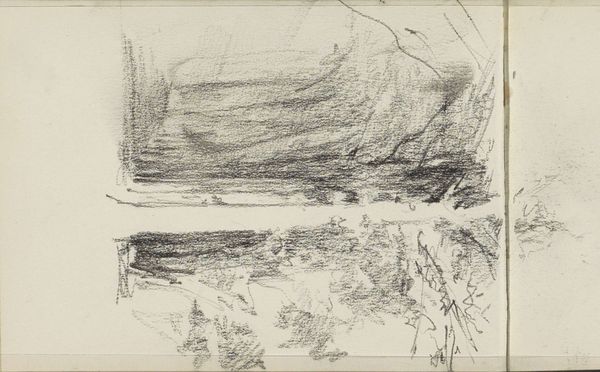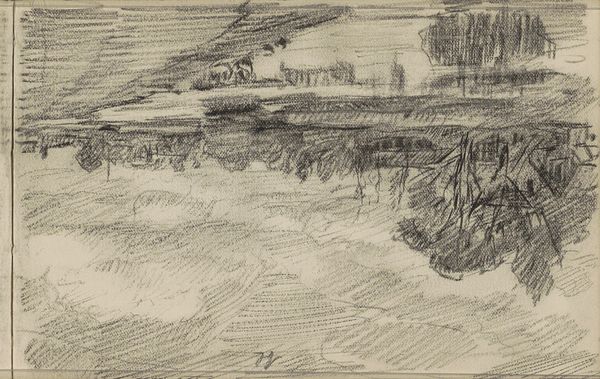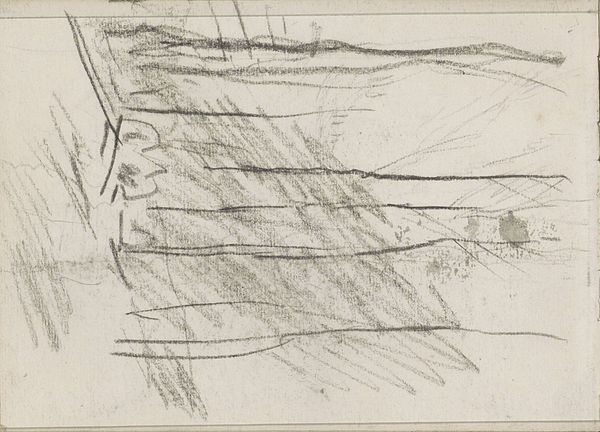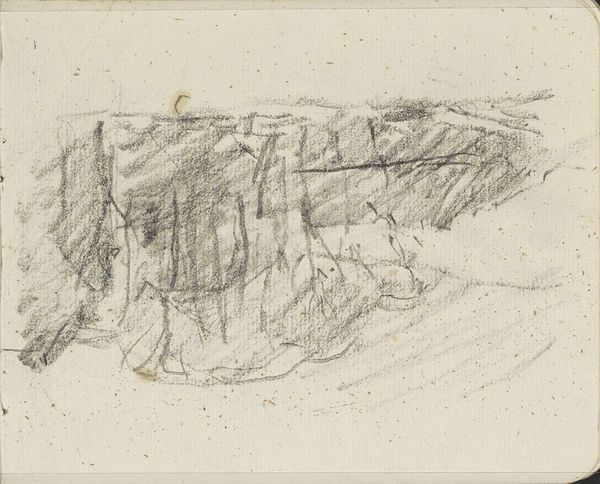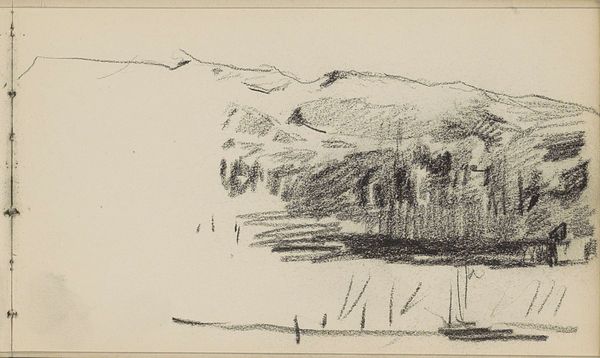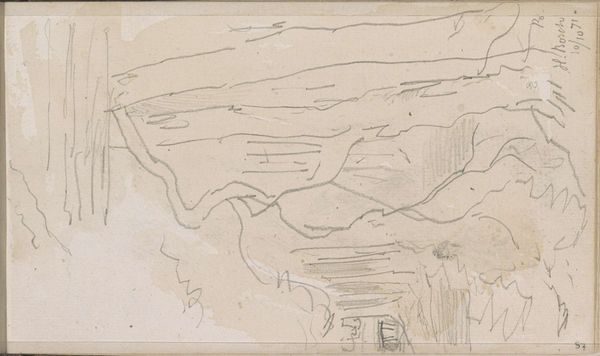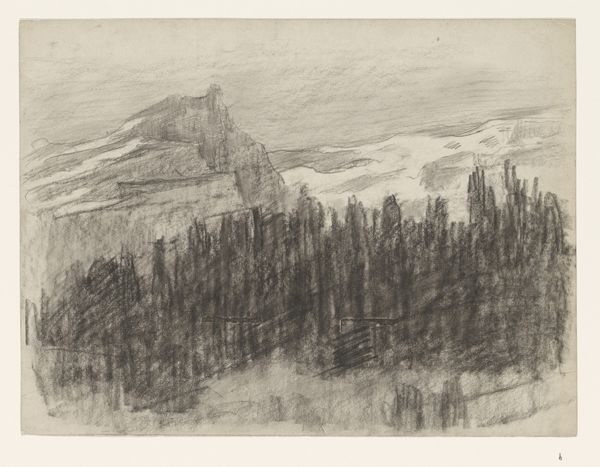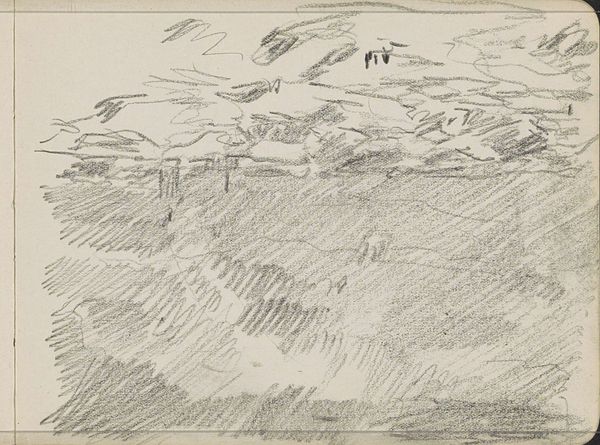
drawing, pencil, graphite
#
drawing
#
pencil sketch
#
landscape
#
pencil
#
graphite
#
realism
Copyright: Rijks Museum: Open Domain
Curator: This sketch jumps right out—it's Isaac Israels' "Standing Figure, Possibly for Building," likely created between 1886 and 1903. A pencil and graphite drawing here in the Rijksmuseum. Editor: My first thought? Restless. There's such an immediacy in the rapid, almost frantic pencil strokes. The texture is compelling—so rough. Curator: That roughness speaks volumes, doesn't it? Considering Israels’ background, this quick study reveals so much about the production pressures. This likely wasn't conceived as a standalone artwork but a component in a broader architectural process. Think about the paper’s accessibility and cost relative to canvas – it informs his choices. Editor: And its public reception! How would such a drawing circulate in Israels' world? A practical tool within his artistic circles? Part of the early museum holdings showcasing preliminary studies? Curator: Exactly. Sketches like this were practical necessities and facilitated production. Examining his use of accessible materials allows us insight into the economy of artistic labour in that time, challenging elevated notions of artistic creation. The materiality highlights it was a common commodity for planning constructions. Editor: And note the figure itself—it’s so minimally rendered. Are we even sure it's a human figure? This invites questions about the power of suggestion. Was he playing with form or rapidly jotting notes down? Curator: I agree that its primary objective as a tool in a developmental context may give an explanation. The title includes "possibly for a building", revealing his emphasis may lay more towards construction itself instead of portraying individual identity and psychology which was very important during the end of the 19th century. Editor: And I imagine its display context today at the Rijksmuseum creates a different set of expectations. How has our gaze changed towards appreciating preliminary art? Curator: Excellent point. The institutional framework shapes the dialogue. By being displayed within these walls, we're ascribing a level of artistic merit. Editor: Seeing Israels' materials allows us a valuable peek into the artistic methods during that time period, while the display challenges how museums help promote different visual languages. Curator: Yes, thinking about that dialogue between artist and context really allows me to understand that sketch further, as not just art, but as information.
Comments
No comments
Be the first to comment and join the conversation on the ultimate creative platform.

